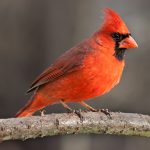Birds are known for their melodious songs and distinct calls, but do they actually understand what they are saying? This is a question that has fascinated scientists for decades, and the answer is not straightforward.
Research has shown that birds have sophisticated communication skills, using a range of vocalizations to convey messages to their peers. But the extent of their language comprehension is still a topic of ongoing research.
What we do know is that bird communication and cognition are complex and fascinating, shedding light on the remarkable abilities of these feathered creatures.
Key Takeaways:
- Bird communication is a complex and fascinating subject, involving a range of vocalizations.
- The extent to which birds understand their own vocalizations is a topic of ongoing research.
- Exploring the cognitive abilities of birds can reveal their remarkable skills and problem-solving abilities.
Bird Communication: Chirps, Tweets, and More
Birds communicate in a variety of ways, from their melodic songs to their distinct calls. Understanding bird vocalizations is key to deciphering the messages they convey.
Every bird species has its unique way of communicating, often using different vocalizations to express a range of emotions and behaviors. For instance, a bird may use a simple chirp to attract a mate, a complex song to establish its territory, or a loud call to warn of potential danger.
Deciphering bird vocalizations requires a keen ear and an understanding of their meaning. Scientists have discovered that birds have a remarkable ability to perceive and distinguish pitch, rhythm, and duration, allowing them to convey and comprehend complex information. For example, certain bird species may use a particular length of notes to signal a specific behavior or emotion, such as aggression or courtship.
Decoding avian linguistics involves analyzing the context of a bird’s vocalization and observing its behavior. One common technique is to record a bird’s songs or calls and then play them back to the bird to see how it responds. This method allows researchers to identify specific vocalizations associated with particular behaviors such as feeding, mating, or signaling danger.
Overall, bird communication is a complex and fascinating area of study. Understanding bird vocalizations and their meanings requires a combination of observation, analysis, and interpretation. By deciphering the intricacies of avian linguistics, researchers can gain invaluable insights into the behavior and cognition of birds.
The Cognitive Abilities of Birds
When it comes to bird communication, it is essential to understand the cognitive abilities of our feathered friends. Birds have long been considered intelligent creatures, and recent studies have only further confirmed this notion.
One area of research focuses on their problem-solving skills. For example, some species of birds demonstrate the ability to use tools to obtain food, a behavior previously thought to be unique to primates. Additionally, birds have been shown to understand cause and effect relationships and exhibit self-control.
Another area of research explores bird communication skills. Some studies suggest that birds are not only capable of understanding their own vocalizations but also those of other bird species. For example, certain birds can distinguish between the songs of other individuals, determining whether they pose a threat or are potential mates.
Overall, birds possess remarkable cognitive abilities that allow them to navigate through their environment and understand their surroundings. By continuing to study their intelligence and communication skills, researchers can gain valuable insights into the complex world of birds.
Decoding Avian Linguistics
With their intricate songs and calls, birds have a unique form of communication that has fascinated scientists for decades. Deciphering their vocalizations and understanding the messages they convey can provide invaluable insight into avian behavior and cognition.
Researchers analyze a variety of factors when decoding bird vocalizations, including pitch, rhythm, and duration. By examining these features, scientists have been able to identify patterns and meanings in bird songs and calls.
For example, some bird species use different songs to attract mates or defend their territory. Others have distinct calls to warn of predators or signal the presence of food. Understanding the context in which a particular vocalization is used can be key to determining its meaning.
Decoding avian linguistics is an ongoing area of research, and new techniques and technologies are constantly being developed to aid in this endeavor. Advances in sound recording and analysis software have made it easier than ever before to study bird vocalizations in the field.
As researchers continue to unlock the mysteries of bird communication, our understanding of these fascinating creatures will continue to grow. By decoding their vocalizations and observing their behavior, we can gain insight into the intricate world of avian language and cognition.
The Intricate World of Bird Communication
Bird communication is a fascinating and complex subject. While humans rely heavily on verbal language to express their ideas and emotions, birds have developed intricate vocalizations to convey messages to their peers. Their communication system involves a range of calls, songs, and displays, which vary from one species to another. So, do birds comprehend vocalizations of their own kind? Let’s take a closer look at some of the ways birds communicate and the level of understanding they demonstrate.
The Different Ways Birds Communicate
Birds communicate through a variety of vocalizations, including chirps, tweets, songs, and calls. They also use body language and displays to convey messages. Some birds have elaborate courtship displays, while others use a specific posture or movement to warn their peers of potential danger. The meaning behind the vocalizations and displays can vary depending on the bird species and the context of the communication.
The Level of Understanding in Bird Communication
Research has shown that birds have an impressive level of cognitive ability and can understand and respond to their environment. Scientists have also observed that some species of birds can interpret the vocalizations of other species, indicating that they have a level of comprehension that extends beyond their own communication system. While it is still unclear to what extent birds understand their own vocalizations, there is evidence to suggest that they possess a remarkable level of communication skills.
The Diversity and Complexity of Avian Vocalizations
Bird communication is diverse and complex, and every species has its unique vocalizations that play an essential role in its communication system. For instance, some birds have specific songs that they use to attract mates, while others have warning calls to alert members of their group to the presence of predators. Moreover, some birds can mimic the vocalizations of other species or even human sounds, indicating that they have a flexible communication system.
In conclusion, bird communication is a fascinating subject that highlights the diversity and complexity of the natural world. While it is still unclear to what extent birds comprehend their own vocalizations, there is ample evidence to suggest that they possess a remarkable level of communication skills. By studying their behaviors and vocalizations, scientists continue to unlock the secrets of avian language and cognition.
Conclusion
After delving into the fascinating world of bird communication and cognition, it’s clear that birds possess an impressive level of comprehension and communication skills. While the exact extent of a bird’s understanding of its own vocalizations may still be a topic of research, scientists have made great progress in decoding avian linguistics.
By analyzing bird vocalizations, researchers have unraveled the messages behind the melodic songs and calls of different bird species. In doing so, they have revealed the diversity and complexity of avian language, shedding light on the intricate world of bird communication.
Avian Linguistic Comprehension
Researchers have shown that birds use their communication skills to convey a wide range of messages, from warning others of danger to attracting mates. They also possess remarkable cognitive abilities, including problem-solving skills and an understanding of their environment.
While the intricacies of bird communication continue to be studied, there is no doubt that they possess a level of linguistic comprehension that is truly remarkable. By decoding their vocalizations and observing their behavior, scientists continue to unlock the avian secrets of language and cognition.
Do Birds Prefer Certain Types of Bird Houses Over Others?
Birds enjoy hanging bird houses that are designed with their needs in mind. Certain features, such as the size and shape of the entrance hole, the interior dimensions, and the materials used for construction, can influence their preferences. Providing different types of bird houses, like nesting boxes, cavity houses, or open-front designs, can attract a diverse range of bird species. By understanding their preferences, we can create inviting homes that cater to different birds’ specific requirements.
FAQ
Q: Do birds understand what they are saying?
A: While the exact extent of a bird’s understanding of its own vocalizations may still be a topic of ongoing research, there is ample evidence to suggest that birds possess a remarkable level of comprehension and communication skills. By decoding their vocalizations and observing their behavior, scientists continue to unlock the avian secrets of language and cognition.
Q: What are the different ways birds communicate?
A: Birds communicate through a variety of vocalizations, including melodic songs and distinct calls. These vocalizations have specific meanings and are used by birds to convey messages to others in their species.
Q: What are the cognitive abilities of birds?
A: Birds have impressive cognitive abilities, including intelligence and problem-solving skills. Studies have shown that birds are capable of understanding and responding to their environment in complex ways.
Q: How do scientists decipher the language of birds?
A: Scientists use various methods to decode the language of birds. They analyze vocalizations, including pitch, rhythm, and duration, to uncover the messages embedded in bird songs and calls.
Q: How complex is the world of bird communication?
A: The world of bird communication is intricate and diverse. Different bird species have unique communication systems, showcasing the complexity of avian vocalizations.










